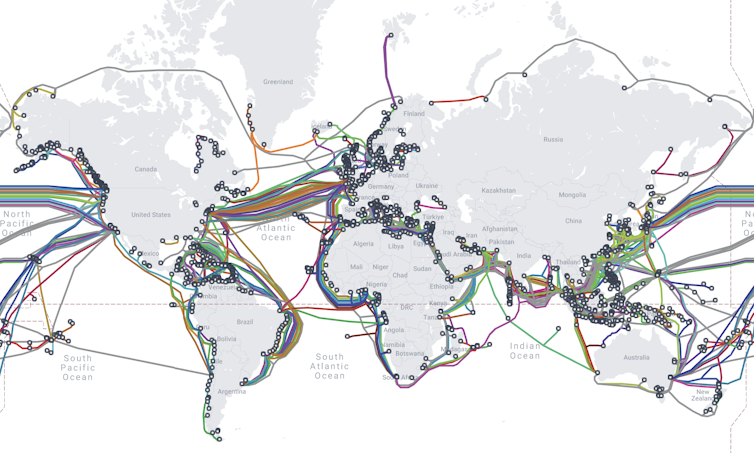Have you ever wondered how an email sent from New York reaches Sydney in just seconds, or how to video chat with someone on the other side of the world with virtually no lag? Behind these everyday miracles lies an invisible, vast network of undersea cables that quietly power the instant global communications that people rely on.
Submarine cables, also known as submarine communication cables, are optical cables laid under the sea and used to transmit data between continents. These cables are the backbone of the global internet, carrying most international communications, including emails, web pages and video calls. More than 95% of all data transmitted around the world travels through these undersea cables.
Capable of transmitting multiple terabits of data per second, these cables provide the fastest, most reliable method of data transmission available today. One terabits per second is enough to transmit about a dozen two-hour 4K HD movies instantly. Just one of these cables can accommodate millions of people watching videos or sending messages simultaneously without slowing down.
Approximately 485 submarine cables are located under the sea, with a total length of more than 900,000 miles. These cables span the Atlantic and Pacific Oceans, as well as strategic passages such as the Suez Canal and isolated areas within the oceans.

Remote Geography, CC BY-SA
Laying cables under the sea
Each undersea cable contains multiple optical fibers, thin glass or plastic wires that use light signals to transmit large amounts of data over long distances with minimal loss. The fibers are bundled and wrapped in a protective layer designed to withstand harsh subsea environments, including pressure, abrasion and potential damage from fishing activities or anchors. The cable is usually as wide as a garden hose.
The process of laying submarine cables begins with a thorough seafloor survey and mapping to avoid natural disasters and minimize environmental impact. After this step, the cable-laying vessel equipped with giant fiber optic cable spools will sail along the predetermined route.
As the ship moves, the cable is untied and carefully placed on the seafloor. Sometimes cables are buried in seafloor sediments in shallow waters to protect them from fishing activity, anchors, and natural events. In deeper areas, cables are laid directly on the seafloor.
Repeaters are installed at regular intervals along the way to amplify the optical signal, ensuring that data can be transmitted over long distances without degradation. The entire process can take months or even years, depending on the length and complexity of the cable route.
Threats to submarine cables
Each year, an estimated 100 to 150 undersea cables are severed, mainly by accidental severing by fishing equipment or anchors. Yet the potential for disruption, particularly of nation-states, is increasingly worrying. These cables, vital to global connectivity, are owned by a consortium of internet and telecommunications companies and are often located in remote but well-known locations that make them easy targets for hostile actions.
This vulnerability was highlighted when multiple cables experienced unexplained failures on March 14, 2024, off the coast of West Africa, causing severe internet outages that affected at least 10 countries. Multiple cable failures in the Baltic Sea in 2023 raised suspicions of sabotage.
The Red Sea strategic corridor has become the focus of threats from undersea cables. One notable incident was the attack by Houthi rebels on the cargo ship Rubymar. The subsequent damage to the anchor’s submarine cable not only disrupted much of the internet traffic between Asia and Europe but also highlighted the complex interplay between geopolitical conflicts and the security of global internet infrastructure.
Protect cable
Undersea cables are protected in a number of ways, starting with strategic route planning to avoid areas of known danger and geopolitical tension. Made from rugged materials, including steel armor, these cables can withstand harsh marine conditions and unexpected impacts.
In addition to these measures, experts also recommend the establishment of “cable protection zones” to limit high-risk activities near cables. Some have suggested changing international law on cables to deter foreign sabotage and creating a treaty outlawing such interference.
Recent events in the Red Sea suggest that help with these connectivity challenges may lie above rather than below. Satellite operators used their networks to reroute internet traffic after cables were damaged in the area. Undersea cables will likely continue to carry the vast majority of the world’s internet traffic for the foreseeable future, but a hybrid approach using both undersea cables and satellites could provide a level of protection against cable cuts.